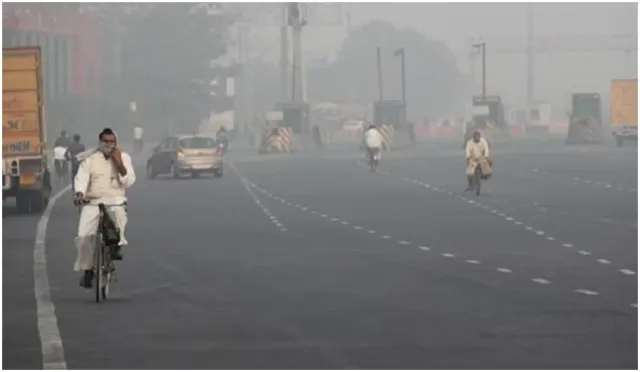- By Shibra Arshad
- Sat, 22 Nov 2025 10:10 AM (IST)
- Source:JND
Experts and policy-makers have stressed the need to work together and prepare a practical, region-wide plan to control rising air pollution in the Indus-Ganga plains and the Hindu Kush Himalayan region.
Several Countries Losing Big Share of GDP To Toxic Air
At a two-day workshop organised by the International Centre for Integrated Mountain Development (ICIMOD), air pollution expert Partha Sarathi Mahapatra said air pollution in South Asia is cutting average life by more than 3.5 years. On the economic front, many countries in the region are losing up to 10.3 per cent of their GDP because of pollution.
Adopting solutions will not only improve health but also reduce the heavy financial burden on national economies. Experts at the workshop agreed that air pollution is harming both health and the economy.
Need For Practical And Doable Solutions
Everyone accepted that no single country can control air pollution alone. A common strategy, science-based cooperation, and strong political will are the only real ways to solve the problem.
The workshop highlighted the need to give priority to better air pollution monitoring networks, community participation, and new ideas. ICIMOD’s Ravi Sahu made it clear that the workshop aims to find practical and implementable solutions.
Promote Electric Vehicles And Clean Cooking
Promoting electric vehicles
Increasing the use of clean-fuel cooking stoves
Making industrial emission rules stricter
Creating low-emission zones in cities
Giving priority to better farm waste management
Only 400 Monitoring Stations For Nearly 2 Billion People
Experts pointed out that in the Indus-Ganga plains and Himalayan foothills, nearly two billion people have only 400 air quality monitoring stations. This huge shortage of monitoring, lack of technical experts, and uneven data are major roadblocks to making good policies.
Wheat Production Down By 36%
That is why setting up a unified, standardised, and wide monitoring network across the region should be the top priority. The workshop advised immediate control of black carbon and ozone, because these pollutants not only spoil air quality but also cause a 36 per cent drop in wheat production. They are responsible for low visibility on 90 per cent of winter days and the melting of 39 per cent of Himalayan glaciers.
ALSO READ: North Eastern Railway Lights 166 Stations With Solar Power; Generates 3.82 Million Units
Climate Change Also Affects Glaciers
ICIMOD Director General Pema Gyamtsho said climate change is also affecting glaciers. Air lead Ashish Tiwari said air pollution is not just a science issue, it is a fight that needs joint effort and strong action. Cross-border cooperation is the only real solution for clean air.

